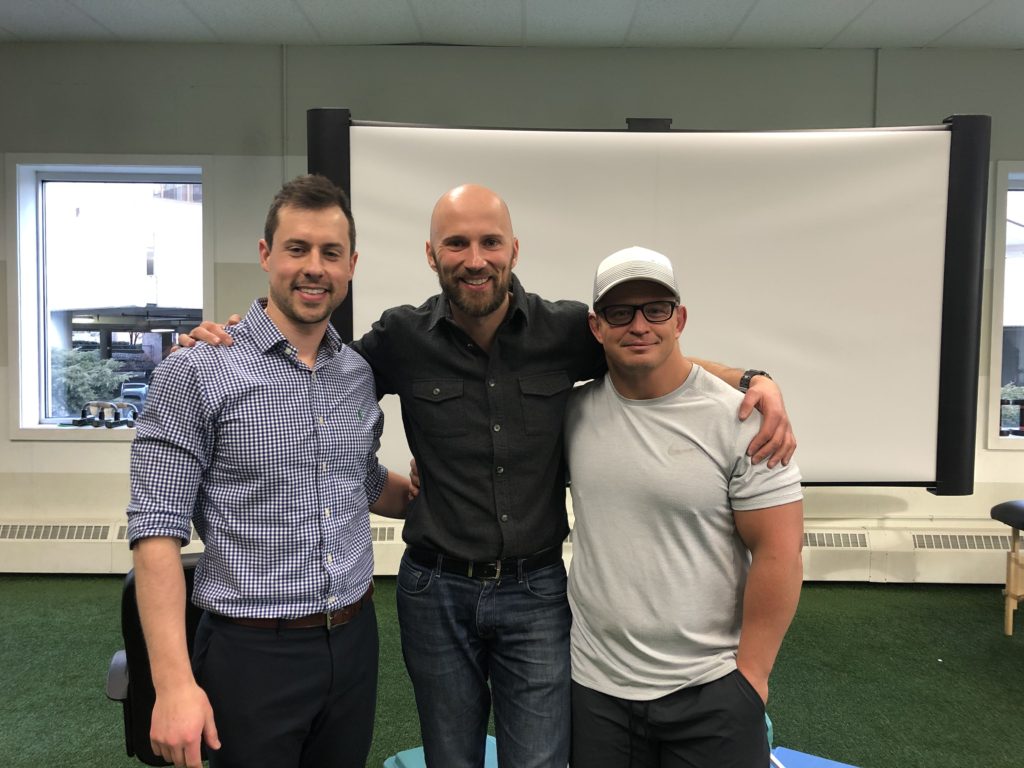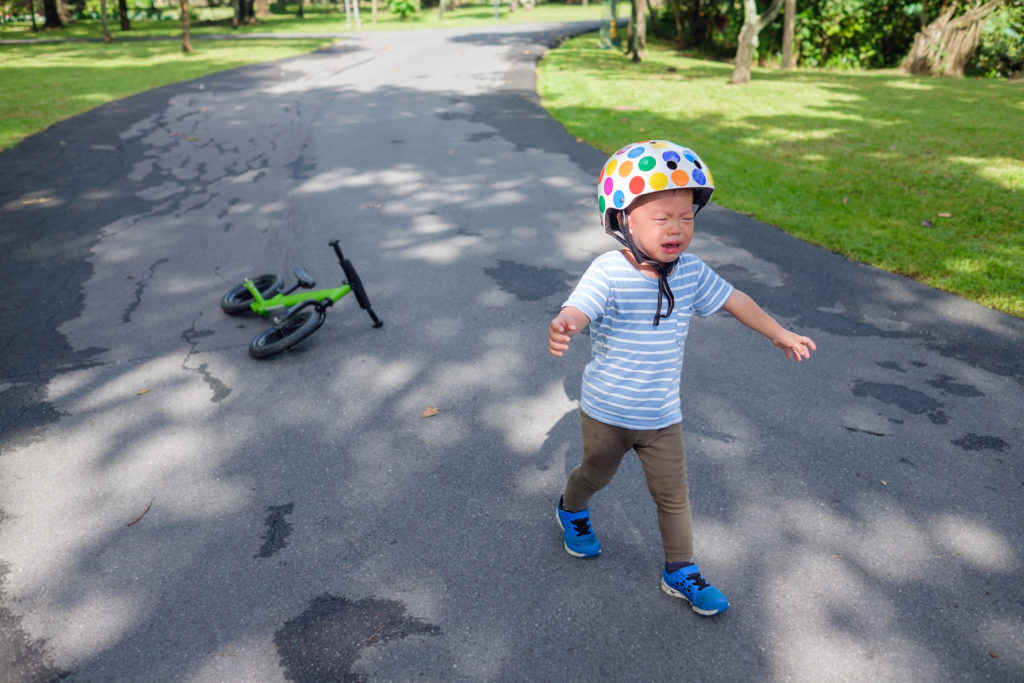Antifragility is beyond resilience or robustness. The resilient resists shocks and stays the same; the antifragile gets better. ~ Nassim Taleb, “Antifragile”
That was the crux of the The Revolution: A Deep Dive into Antifragility. How do we, as health and fitness professionals, help our clientele improve with the stressors we impart? How do we take clients from various starting points—be it an immobile person in persistent pain, a complete beginner, or a high level athlete—and push them towards their goals?
That’s what made this experience unique, as the three presenters, Seth Oberst, myself, and Pat Davidson, sought to create a continuum.

For Seth, it was starting with the most fragile. Pat’s goal was to push performance to the highest level, to not survive, but thrive. While I aimed to be the middle ground; establishing the principles of movement common amongst all people.
And I want to share the highlights with you. While biased, I thought this was a unique experience. Though we all came at the deep dive from different angles, there were many commonalities shared.
Enjoy!
Table of Contents
Self Regulation – Seth Oberst
As mentioned in a previous post, self regulation is the intrinsic ability to response to internal/external stressors with an efficient range of responses. There are three keys to demonstrating self-regulatory capabilities:
- Differentiating safety vs danger
- Responsivity
- Completion (Resolving the situation).
Trauma, an unresolved defense pattern, negatively impacts these keys. To remedy this situation, we must reestablish each of these areas in a manner that promotes self-regulation.
Providing safety cues are essential for differentiation development. Many tactics can be employed: educating patients on pain or stress, facilitating a safe haven with your interaction, establishing social connection, and many more.

Increasing responsivity occurs by improving interoception, which is the sense of the internal environment. Interventions that develop interoception include movement, meditation, even touch (interesting side note, absence of touch as a kid is one of the biggest stressors they can undergo).
By establishing differentiation and responsivity, there can be completion of the stress response.
Restoring Regulation through Resiliency
Seth employs a 4-step process towards building resiliency, a key component to having adequate self-regulation.
- Gather resources
- Re-establish boundaries
- Facilitate support through position and touch
- Interoceptive Orienting
Let’s dabble briefly into each
Gather Resources
This step involves having the necessary substrates to perform desired tasks. Does the client have adequate, nutrition, sleep, breathing capabilities, etc?
If one lacks resources, it would behoove the movement professional to address the aforementioned areas.
Re-Establish Boundaries
Boundaries ought to be semipermeable, meaning the “right” things get in (safe stimuli), and the wrong things (dangerous stimuli) are kept at bay.
From what I’ve seen Seth perform clinically, this involves finding appropriate spacing between himself and the patient. He will adjust his orientation and closeness to the patient until the patient determines what distance he or she is comfortable with.
Facilitate Support Through Position and Touch
Seth will encourage patients to utilize positions he or she deem comfortable and pleasant, and use touch within treatment to enhance and define safe areas within the body.
Interoceptive Orienting
This portion involves the patient attuning to his or her body; a guided exploration of how that person feels.
The objective would be to find a safe or neutral area within the body as an anchor point, and to feel various sensations in the body as the movement or meditation is performed.
The Myth of Variability – Zac Cupples
Variability is a term that gets thrown around a lot in our industry, but what does it really mean?
According to the research, variability is defined as the normal variations in motor performance across multiple reps/tasks over time. Repetition without repetition if you will (and I will).
There are two types of variability: endpoint and coordinative. To illustrate differences between the two, let’s use learning to ride a bike as an example.
When you are first learning to ride a bicycle, rarely can you make it down the road smoothly. You’ll have to stop multiple times, fall a bunch, cry, get frustrated, and so much more.

The initial steps of learning how to ride a bike are high in endpoint variability. The goal may be to ride down the street, but rarely do you reach the target. Variability is high in the beginning, but unfavorably so.
Eventually, we can reliably ride our bike to the end of the road. But as our bike riding skills improve, each progressive ride is accompanied by micro-adjustments and fine tuning of the motor skill. These minor changes are useful because they provide us flexibility in changing conditions, enhance sensorimotor development, and ensure tissues do not get overloaded. This alterations are an example of coordinative variability.
The goal for both performance and health would be to demonstrate coordinative variability in a wide range of tasks. If there is too little variability, we lack growth, cannot adapt to the environment, and overload tissues.
If variability is too high, then we cannot develop reliable patterns, and stress tissues by over-responding to perturbations caused by poor movement. We must hit the sweet spot.
While it may seem as though the elite cannot possibly possess high variability in their tasks, the research has shown to demonstrate the contrary. In one study, elite javelin throwers were shown to never throw the javelin the exact same way with each rep¹. This variance signifies that the best performers have more solutions to tasks available to them. James Harden can hit the step back 3 regardless of what the defense throws at him.
But how can we measure imperceptible variations in movement? Most variability measures involve complex, nonlinear math, and expense equipment. Thus, when someone mentions they are improving variability, they are likely not looking at what they think they are looking at.

So are we screwed? We have this amazing quality necessary for health, yet have no idea how to measure it nor improve it.
Do not abandon hope my fine fam.
To answer this question, we must look into what qualities go into movement behavior.
With any situation, we are always trying to approach a stable, predictable behavior.
From a movement standpoint, stable behaviors occurs when there is stability of biomechanics, morphology, and environment.
Stable movement behavior = biomechanics + morphology + environment
New behaviors occur if we induce variability into anyone of these properties. While morphology can minimally change, we can create variability both with biomechanics and environment.
To make biomechanics variant, we must be able to demonstrate full joint range of motion at all given joints. This state would theoretically provide for more movement options, increasing the potential patterns and solutions we could develop at a given task.
For environment, we ought to demonstrate movement competency and variant joint range of motion in a wide variety of tasks. Ideally, one should demonstrate adequate hip extension at rest on a table, in a split squat, and in running all the same. We manipulate the environment, yet achieve similar endpoints.
To maximize results and enhance learning, let the person undergoing the task fail, explore possible solutions, and come to conclusions on their own.
Creating Antifragility – Pat Davidson
Pat’s message centered on the importance of suffering.
In the modern era, we expose ourselves to very few major physical stressors. Most stress we undergo is low grade chronic stress.
Paradoxically, stress is key to our adaptability and growth. If our bodies are not stressed, then there is no need to change. There is no growth. We become stagnant, weak NARPs (non-athletic regular people).
Training is a convenient method to induce controlled stress on our bodies. Appropriate training can drive the physical adaptations we seek.
Appropriate training is progressive demonstration of sensorimotor competency – the movement looks and feels right. In order to create this competency, constraints can be used on tasks to ensure a successful outcome, with easiest on the left hand side, the challenge on the right hand side:
- Static → dynamic
- Sagittal → frontal & transverse
- Symmetrical stance → single limb stance
- Gravity eliminated → antigravity
- Reduced range of motion → Increased range of motion
- Reactive neuromuscular training → decreased utilization
- Increased reference (finding/feeling) → decreased reference
- Increased constraints (machines) → decreased constraints
- Low load → high load
Pat also loaded his portion of the talk with several helpful coaching cues and tips that I really liked.
Perhaps my favorite, which Pat got from my homegirl Michelle Boland (or as she prefers, Coach Bo), is placing a foot on a wall to enhance reference during split stance activities. This simple action really enhances the activity of desired areas.
I also liked how Pat uses offset loading to drive rotation within the spine. If one is to place a weight in the contralateral arm, this can help orient the entire spine towards the working leg. If the weight is ipsilateral to the working leg, then trunk rotation contralaterally can occur.
Sum Up
If your goal is to make people antifragile, then here is your starting point. It was an honor to speak with these two giants, and amazing to see how three very different backgrounds can come to similar conclusions.
To summarize:
- Self regulation is the ability to respond appropriately to stressors; requiring differentiation, responsivity, and completion
- Resiliency requires resources, boundaries, facilitation through position and touch, and orienting on how the body feels (interoception)
- Variability is differences in movement from repetition to repetition, and likely cannot be measured on the training floor or clinic
- Manipulating biomechanics and the environment can promote alterations in behavior towards variable states
- Stress is necessary for adaptation
- Sensorimotor competency involves things looking and feeling right, to which constraints can be used to achieve.
How do you push your clients to the next level? Comment below and let the fam know!
References
- Bartlett et al. Is movement variability important for sports biomechanists? 2007. Sports Biomechanics.6(2);224-243.

